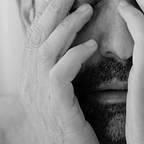Why I Take Photos
After 40 years I’m starting to get good, and understand.
My photography is a practice. Like yoga, you never “get there” so much as hope to keep growing.
It’s a way of seeing, obviously, but for me it’s also making a short poem out of what I see. The poems might be funny, or wistful, or arousing — they offer a moment of delight, and if I do it right, they hint at the beautiful transience of human life.
I’m showing you this, I made this for you.
I’m not a photographer of any specific subject matter — I shoot whatever I’m doing, what I’m around. The images are the result of an approach, a disciplined poetic practice. If you look through the images, you’ll feel their commonality, even if the subject matter varies.
It’s not just any poem; the poem is a haiku: very much subscribing to the principles of that zen art form — concise, structured-but-natural, beautiful, and true.
And it’s not enough to be structured — a haiku has a specific structure. It always has two beats — the first thing you see, what you think it’s a picture of, then a moment later you see something else, a counter-point, and in that moment is a new understanding, a twist, a grin. It doesn’t say something too obviously, but more by allusion. Sometimes I get there and sometimes I don’t. When I succeed it’s an intentional moment. More moment than object. An abstraction that is made of “pure seeing.”
On a practical level, I travel light and shoot quickly. Stolen moments. Compositions on the sly. I keep a camera on me, often, when I’m doing other things, including work. Sometimes I have to keep it out so people eventually get comfortable around it. Each approach has its situation.
With each haiku I pluck a little moment from time, a slice of visual space, snip them out and put them in my pocket for later, and to give you.
A Philosophy
I believe in the physical print and care little about the abundance of ephemeral digital images. My monochromatic images aren’t nostalgic, but purposefully constrained. I use color sparingly, and only when I feel it deeply matters. I am weary of conversations about cameras and technology, gadgets and pixels; I don’t think these things matter much anymore and the topics are dull. Camera choice isn’t about good and bad, or pros and cons, so much as opportunities and constraints. A pinhole camera or a Holga can produce images a Hasselblad can’t—the question is: what are you trying to make? Chose your constraint and see what you can do within it.
I believe that a photo should not need explanation to work. I believe that the best images could not have been taken by another person; or an instant before or later, that they are a product of the unique moment in time and the individuality of the human taking the picture.
Photography has become a Zen Art
Since everyone has a camera, the medium has been democratized. Anyone can easily do it. That’s important. And since other means of capturing and sharing visual information have improved beyond our wildest imaginations, I suggest that this 19th century invention is at the end of its utilitarian life. Photos are just too maleable today to be synonymous with ‘truth’ as they used to be. So, like calligraphy and archery, for instance, it takes on a new life and purpose, and becomes more delicate art and sport.
…my practice, whipping out these little origami, short haiku, drawn in a breath like an enso. Little truths.
I hope I can produce images consistently that go beyond the lucky snapshot and reveal as much about the me as they do about these subjects. And sometimes, like a good haiku, give you a little smile.
Anyone Can Do This
I’ve been studying photography for decades and haven’t found this particular approach anywhere before. It can teach and explore composition without rules of third or golden means; it describes images outside of cameras or technology. I’ve seen photography combined with haiku, but it’s only to say it’s calming and meditative, never as a poetic form. And I’ve seen it combined with Zen (notably by Minor White) but even there it is used as a tool to pursue mindfulness, and not in the pursuit of better photos.
I’m teaching a number of in-person workshops around the country over the next year and I’d love to hear from you if you’re curious about them — please, drop me a note and connect with me. Thanks, all.
—Rubin
